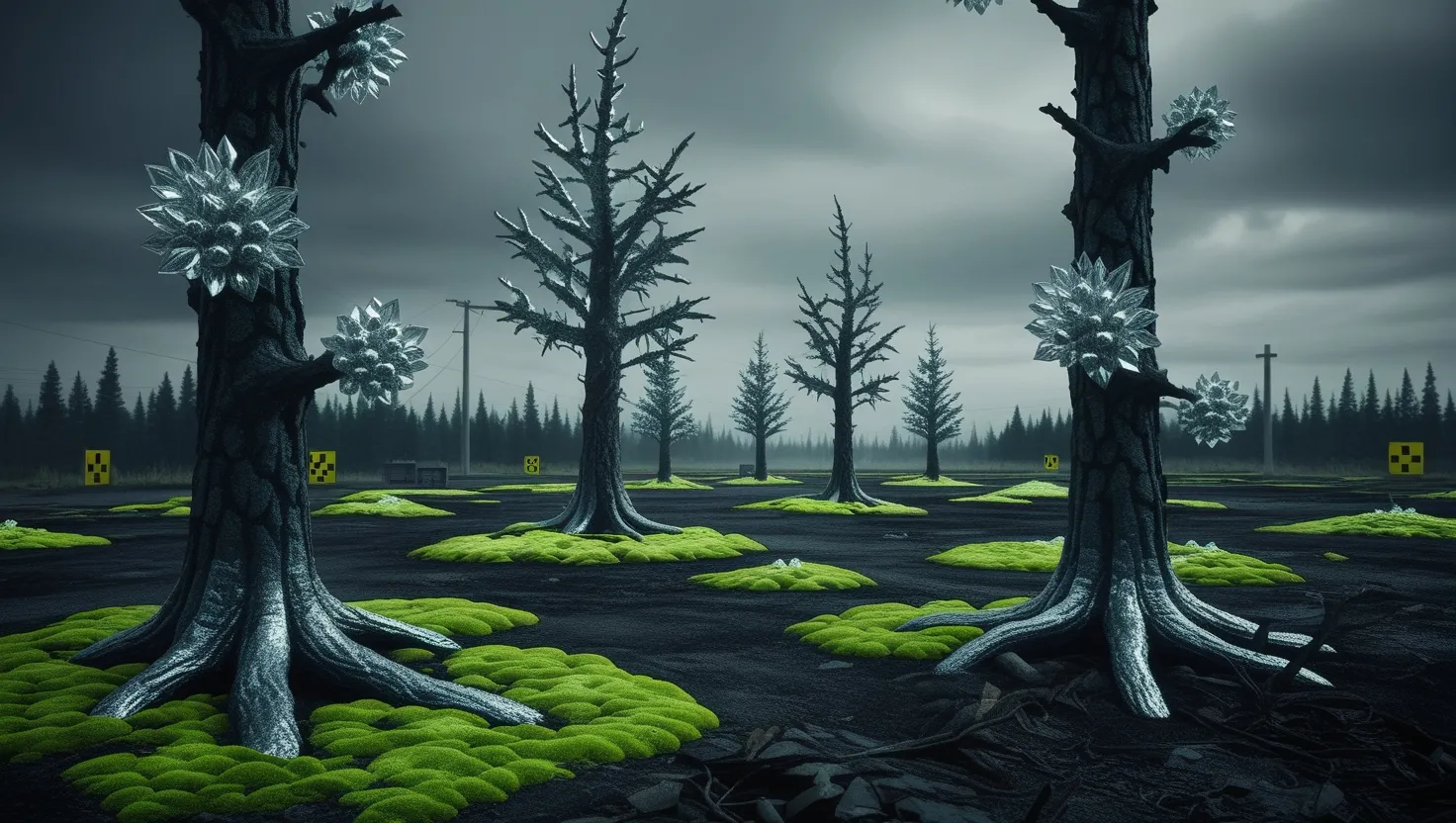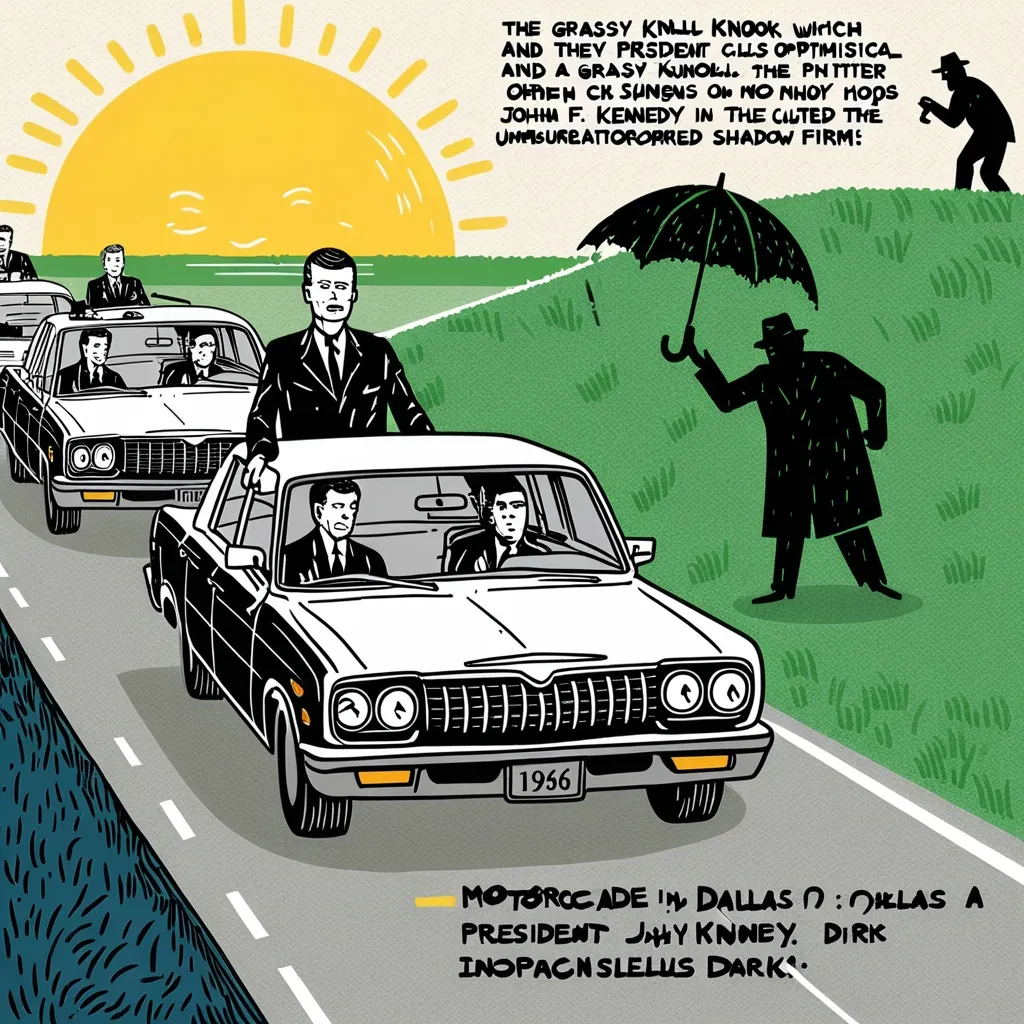The story of Kyshtym’s mutant flora doesn’t begin softly; it bursts into existence on September 29, 1957, with a thunderous explosion so powerful it sent radioactive waste streaming across thousands of square kilometers. For a long time, the official focus was on the grim toll: frantic evacuations, hidden suffering, and a poisoned landscape. But what if I told you that, hidden beneath the tragedy’s shadow, something truly odd and provocative began to stir—a phenomenon so strange it makes the bleak narrative tilt toward the uncanny?
At first glance, the Kyshtym region looked like any other post-nuclear wasteland—a terrain scorched by radiation, a mosaic of abandoned villages, and a silence heavy enough to feel physical. Yet, as years slipped by, local botanists and wandering scientists noticed plants weren’t simply clinging to life; they were changing in ways that seemed to defy both biology textbooks and common sense. Pine trees grew bark layered with crystalline structures, almost as if they were donning armor. Berries sparkled with metallic inclusions. Mosses achieved photosynthetic feats that, in any normal context, would have been headline news for the scientific world.
What causes a pine tree to alter the very composition of its bark? Why would a berry plant evolve to store metal in its fruit, or a patch of moss reinvent the basic chemistry of capturing sunlight? These were the sorts of questions that started circulating in hushed tones among the few researchers given access to the zone. And soon, the questions would outpace the answers.
By the late 1970s, something changed. Earlier ecological studies, initially open and even cautiously optimistic, became rare. Fieldwork permissions dried up, replaced by ominous warnings and military checkpoints. Instead of candid papers, rumors filtered out: the military was running experiments, collecting samples, testing mechanisms. Was this just classic Soviet secrecy, or something more?
It’s hard to shake the suspicion that scientists encountered not just random mutations, but something disturbingly organized. Let’s pause here:
“The important thing is not to stop questioning. Curiosity has its own reason for existing.”
— Albert Einstein
I find myself circling back to one central question: were these plants simply adapting to survive, or did someone, somewhere, try to guide their evolution deliberately? If you were tasked with rehabilitating a radioactive zone, or harnessing nature to produce new materials, would you leave adaptation to chance? Or would you try to direct it, nudging genes and chemicals to see what new forms emerge?
Decades later, echoes of Kyshtym’s secret garden began surfacing in unlikely places. Patent filings from Western biotech firms described biomaterials with striking similarities to the Kyshtym mutations—bark-inspired radiation shields, enzymes for pulling toxic metals from soil, photosynthetic hacks promising higher crop yields. How could independent researchers, with no official connection to Soviet science, describe inventions so curiously aligned with Kyshtym’s mutant flora? The pattern was impossible to ignore—unless, of course, you were paid to look away.
Is it plausible for a disaster’s aftermath to be so carefully “harvested,” for its botanical marvels to quietly migrate from forbidden woodland to patent office? In my view, the answer is both yes and no. Yes—because scientific espionage, whether acknowledged or not, is a persistent undercurrent. No—because the ramifications, both ethical and ecological, are staggering.
Let’s consider a personal thought experiment. Imagine walking through the zone (with heavy boots and a rattling dosimeter, of course), stumbling across a pine that has reworked its bark into a crystalline exoskeleton. You chip off a section and discover it repels not just radiation, but certain fungal threats. Suddenly, a use case emerges: deploy such trees along nuclear sites or contaminated forests worldwide. Is this nature’s ingenuity—or a shadowy blueprint, realized through secret research programs?
And then there’s the question of intent. If trace amounts of unfamiliar organometallic compounds began appearing in the soil years after the explosion, what does that suggest? Either a secondary, deliberate effort—someone introducing agents to catalyze weird new mutations—or a coincidence too precise to trust. The more I look at this, the more I see a push and pull between chaos and intention.
“There are no accidents, only opportunities disguised as calamities.”
— Niccolò Machiavelli
Let’s turn over another stone: adaptive evolution at breakneck speed isn’t supposed to happen. Plants, as a rule, evolve slowly, shifting over centuries or millennia. Radiation can speed up mutation, sure, but usually the results are random and mostly harmful. Here, however, traits seemed to confer clear advantages: greater photosynthetic output, toxin sequestration, even hints at rapid growth and resilience. This hints at either mechanisms we don’t fully grasp, or, more controversially, human intervention along the lines of selective breeding, chemical triggers, or—dare I say it—direct gene editing.
Some might argue that this is simply a case of “life finds a way.” But when geneticists later isolated gene-editing markers similar to those used in modern biotech, the debate shifted. These weren’t the scars of natural selection under duress. They were signatures of designer mutations, intentional and replicable.
So where does this leave us? Kyshtym’s plants present a riddle wrapped in a patent dispute: innovation born from disaster, shrouded in secrecy, and possibly co-opted by private firms. Whose intellectual property is a mutant pine’s crystalline bark? Can you claim ownership over a moss whose ancestors absorbed cesium and strontium, if your only contribution was a nudge with a syringe or the sprinkle of an unknown compound?
The philosophy of science, too, is up for grabs. If survival can be accelerated, organized, and harvested, what stops us from trying to induce such adaptation elsewhere? Should such research be transparent, or does the risk of weaponization—turning living organisms into tools for war or espionage—mean that secrecy will always win?
“Science is the great antidote to the poison of enthusiasm and superstition.”
— Adam Smith
Here’s another thought: what if, instead of being a singular event, Kyshtym is simply the first disclosed example of a broader trend—disasters becoming outdoor laboratories, crisis zones morphing into uncertain gardens of the future? How many other exclusion zones, from Chernobyl to Fukushima, are quietly sprouting experiments, monitored by agencies who see opportunity where others see ruin?
And what of the ethical tightrope? Should we let disaster-born evolution run its course, or intervene, catalog, and copy as much as possible? If we find that deliberate manipulation produces results too useful to ignore, do we continue in secret, or bring such projects into the light? In a world hungry for ecological innovation, the temptation to replicate Kyshtym’s mutant flora outside the context of disaster is enormous.
Of course, there’s a poetic irony here. Plants, silent and rooted, are often cast as passive victims—yet in Kyshtym, they emerge as protagonists, outpacing our understanding, rewriting the rules of adaptation, and maybe even outwitting the designs of their human “cultivators.”
“In the fields of observation, chance favors only the prepared mind.”
— Louis Pasteur
As new patent filings appear, as rumors persist of living samples moved across borders, and as the exclusion zone remains stubbornly off-limits, one thing is clear: the story isn’t finished. The mutant flora of Kyshtym continues to grow—literally and metaphorically—a reminder that for every disaster, there are unpredictable afterlives, and for every secret, someone waits to bring it into the sunlight.
If you could visit the Kyshtym zone yourself, what would you touch, sample, question? Would you see victims of catastrophe or pioneers of the future? The next chapter may depend not just on what is discovered, but on who gets there first—and who decides what these living testaments become.






